20 Best Perennial Plants for Part Sun
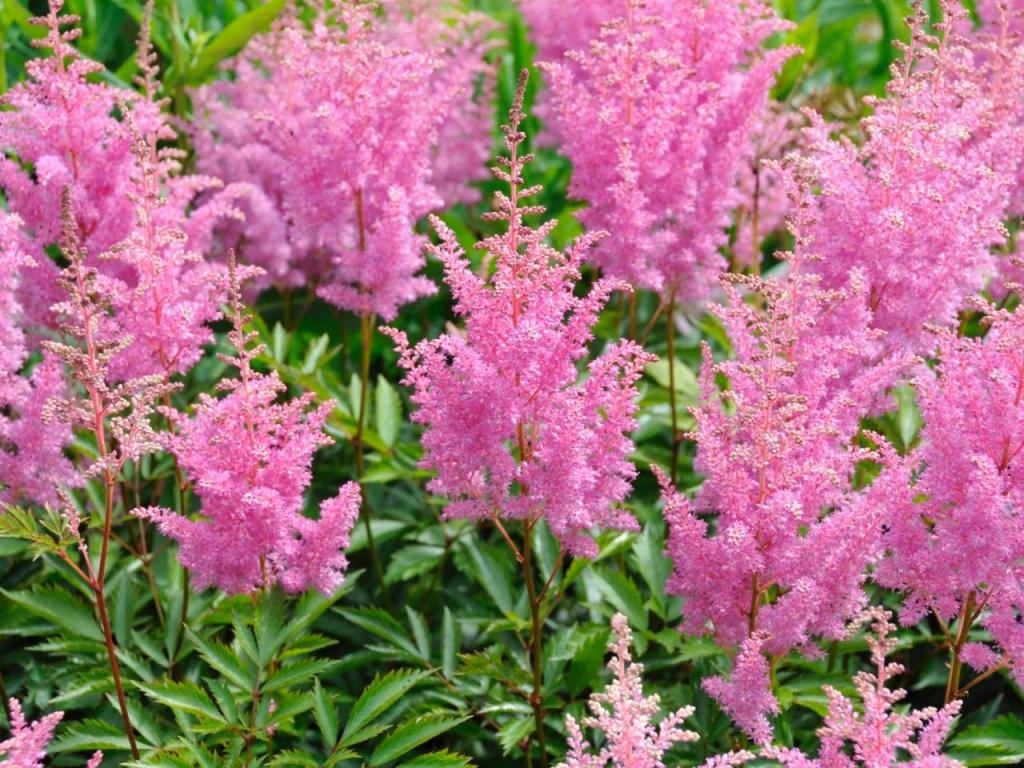
Perennial plants are those that are capable of living for more than two years. Perennial plants also represent those that do not show woody growth. The perennials mostly bloom during spring and summer and fall back to the ground during fall and frost. They again return during springs, and the cycle continues depending upon the longevity of the plant. Some perennial trees and shrubs might show prominent endurance, while the flowering perennials might have to be replaced once in every couple of years. In the same manner, although some perennial shrubs and trees are capable of retaining their leaves all through the year, some flowering perennials fall back to the ground. The root structure is, however, dormant. At the onset of spring, the root becomes active, giving rise to plant tops.
Why Should One Grow Perennials?
Perennials have many merits, and you can easily use them for your meadows, window boxes, hanging baskets, or garden beds. Below given are a few reasons why perennials are the best choice for your garden.
- Maintenance: Perennials are highly time-saving and do not demand much of your energy, tendering, and water. Perennials plants are best to be planted during autumn or spring. During the first year of the plant, the plant focuses on strengthening and establishing roots, which is why some perennials don’t flower at that period. Perennials, however, need to be keenly checked for weeds periodically, but once they are mature, they don’t depend on your attention.
- Monetary value: While annuals have restricted longevity of one year, perennials, on the other hand, are a wise economic option for your garden as they keenly multiply every year. Perennials also offer you the luxury of dividing them and growing them on your areas of interest in the garden when naturalized.
- Aesthetic value: Perennials bless your garden with impeccable ornamental value with their brightly colored foliage and flowers.
Things To Consider Before Buying A Perennial Plant
Here are a few things which everyone should consider before buying any perennial plant for the part sun:
- Hardiness Zone: Knowing and understanding your hardiness zone is excessively important before buying a perennial for your garden. While some plants are largely resistant to frost, some plants can be rendered dead even by the attack of slightest frost breezes. USDA has created 12 hardiness zones categorizing areas of all kinds of temperatures.
- Planting Season: Most perennials have to be planted during spring or fall. This is because both these seasons are mild and are the times when plants are either entering winter dormancy or getting out of the winter dormancy. New roots are easier to establish at warmer temperatures as the ground holds a good amount of moisture during this time.
- Height: Some perennials may grow up to 60 inches, although all perennials mostly start with the same height. Also, consider factors like the exact location of the garden where you would be planting it and the neighboring plants for bringing out better-growing conditions.
- Sun and Shade: Plants have different light conditions as some plants might require sun while others get killed by a little exposure to direct sunlight. Categorize your garden area based on the light conditions that each area gets subjected to. Full sun areas are those that receive six or more hours of sunlight. Part sun areas are those that receive four to 6 hours of sunlight, and the shady regions are those that are subjected to less than four hours of sunlight per day.
- Soil Requirements: Perennial soils usually require fertile soils, which also has good drainage that can help in strengthening and supporting the roots. Soil also needs to hold a good amount of moisture for anchoring the newly growing roots. Be keen to choose perennials that would work for your location and your requirements.
Below are twenty perennials that grow in part sun and can be great for adding beauty and ornamental value to your gardens, indoor spaces, and other landscapes.
1. Stella D’oro Daylily Plant
This plant beautifies your garden with golden-yellow blooms that attract butterflies and is most suitable for growing in USDA plant zones 4 to 9. The yellow gold petals of the blooms are all you need to welcome your springtime after a winter continuing throughout summer and fall. These flowers are a boon to grow in your garden as they are low maintenance and drought and heat tolerant, which makes them grow anywhere and everywhere.
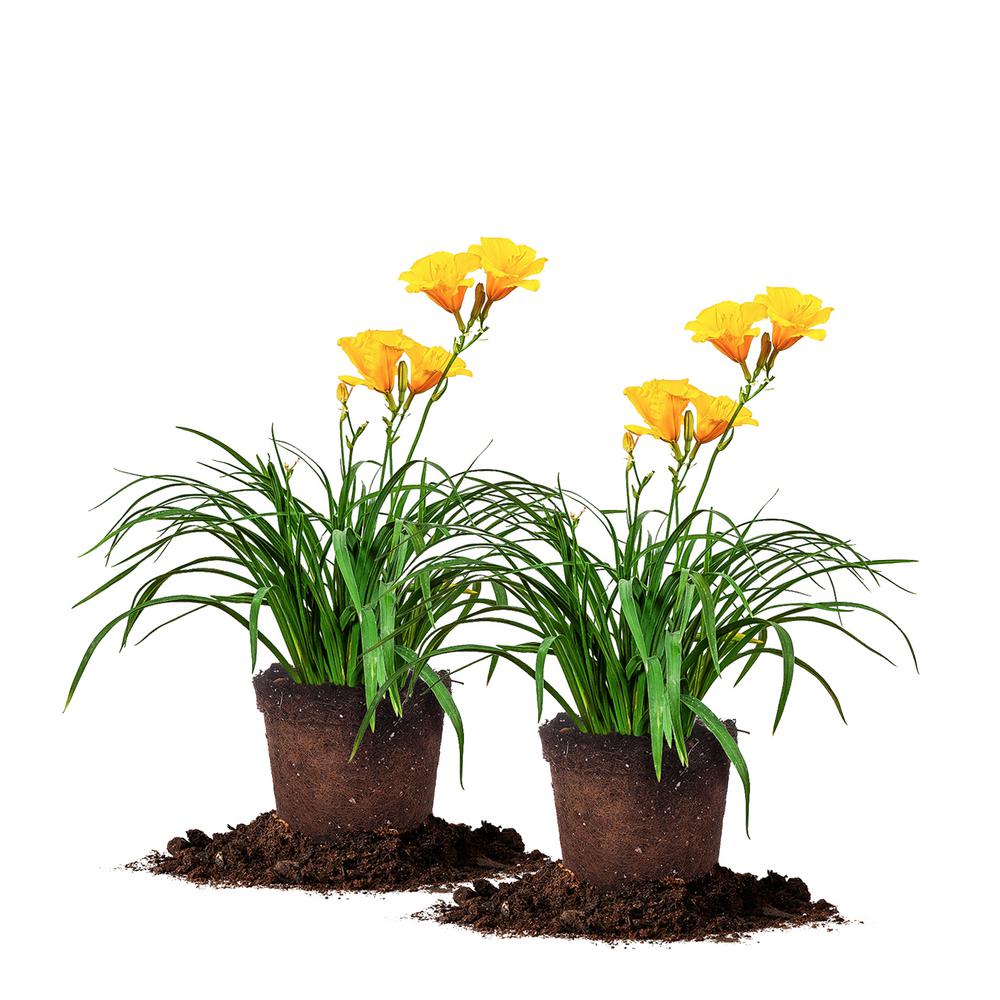
BUY NOW
Specifications:
- The plant is shipped as a container.
- The plant is shipped at the height of 10in.
- The plant grows to an average height of 14 in. and an average width of 10 in.
- The best time for planting it is in spring.
- The color of the blooms is yellow.
- The botanical name of the plant is Hemerocallis.
- It gives out fragrance.
- This perennial has to have a minimum of 18 inches between its plantings.
- This plant is returnable up to 180 days.
- This plant can tolerate part sun.
- This plant attracts pollinators like butterflies.
- This plant deters no wildlife.
- This plant is shipped as bare root.
- The growth habit of this plant is a shrub.
- The hardiness zone of this plant is 4 (-30 to -20 F),5 (-20 to -10 F),6 (-10 to 0 F),7 (0 to 10 F),8 (10 to 20 F),9 (20 to 30 F).
- The plant requires water twice every week.
Key Points:
- Daylily plants are less expensive.
- They can be grown anywhere due to their heat tolerance.
- These plants are easy to grow and don’t demand too much of your time and energy.
Pros:
- This plant is drought resistant.
- These plants are low maintenance.
- Due to their heat-resistance, these plants are capable of growing in many locations.
Cons:
- Daylilies are susceptible to two potential fungal diseases called leaf steak and daylily rust.
- Daylily leaves start to yellow at the end of the growing season.
FAQ
Q1. Is this plant deer-resistant?
Yes, this plant is deer resistant.
Q2. How much watering does this plant require?
These plants have to be watered at least twice per week.
2. Packy Half Flat Pachysandra Groundcover
Pachysandra is precisely the plant you need for your garden if you are looking for upright and evergreen because they are capable of green foliage and can grow significantly under trees and shady areas. This plant gives out small white flowers during spring, which multiplies the pleasant ambiance of your garden.
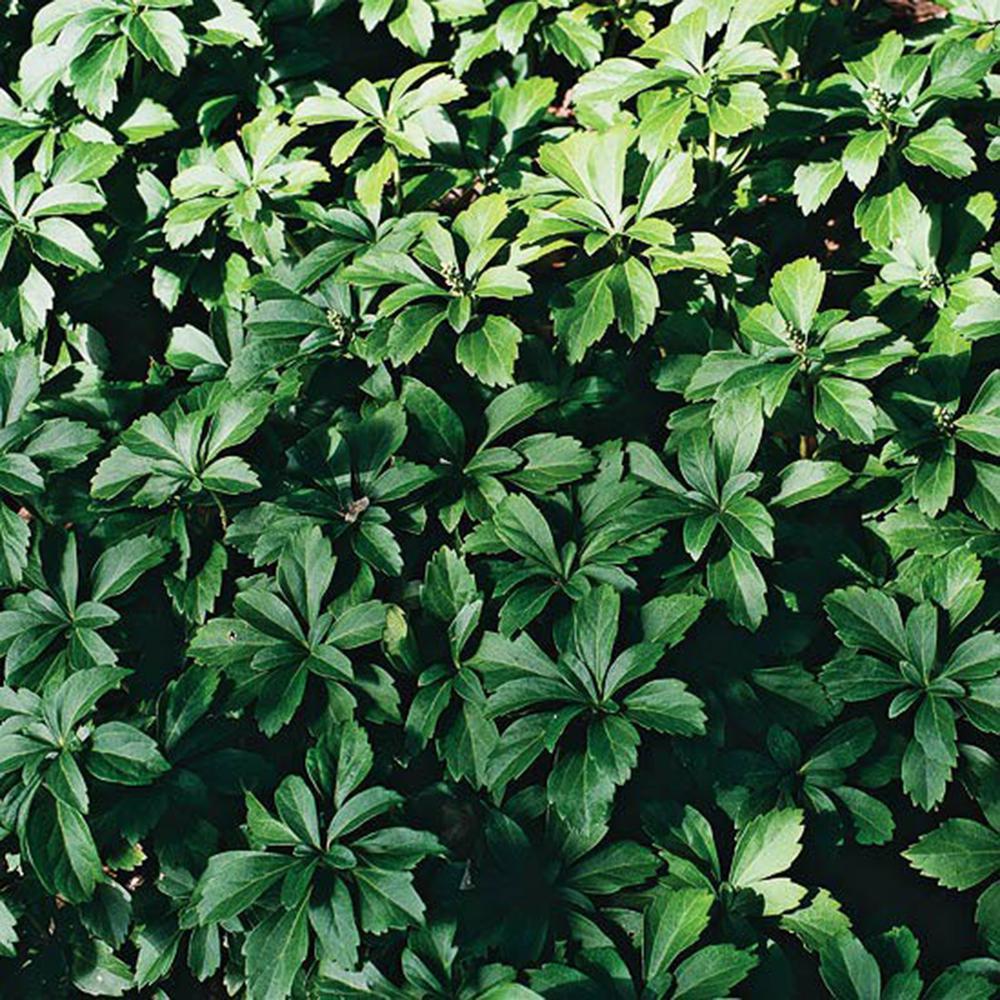
BUY NOW
Specifications:
- The plant is shipped as a container.
- The plant grows to an average height of 8 in. and an average width of 12 in.
- The best time for planting is spring to fall.
- The color of the blooms is white.
- The botanical name of the plant is Pachysandra.
- It does not give out any fragrance.
- This perennial has to have a minimum of 12 inches between its plantings.
- This plant is returnable up to 180 days.
- This plant can tolerate part sun.
- This plant attracts pollinators like bees.
- This plant deters deer and Rabbits.
- The growth habit of this plant is mat-forming.
- The hardiness zone of this plant is 5 (-20 to -10 F),9 (20 to 30 F).
- The plant requires water only when the soil is dry.
Key Points:
- This plant shows ready adaptation to dry shade areas under trees or plants grown near buildings.
- The stems of this plant usually spread to form a mat that prevents erosion of soil on shady slopes.
- This soil is ideal for seed-starting in indoor plants.
Pros:
- Pachysandra, as a garden cover, can give an ornamental lush green look to your
Cons:
- The evergreen foliage of Pachysandra starts looking bleached if exposed to sunlight.
- Pachysandra, though, is a fantastic groundcover, grows very slowly.
FAQ
Q1. Is this plant good to grow in sunny areas?
This plant is not greatly preferred for sunny areas as the leaves can burn easily under the sun.
Q2. How often should this plant be watered?
This plant requires watering only when the soil is dry.
3. Super Blue Lily Turf (Liriope) Grass with Violet Purple Flower Spikes in Summer
This plant is a groundcover grass and has tall leaves, which are dark blue-green in color, greatly enhancing the aesthetic appeal of your garden. Liriope is found to develop purplish violet flowers in summer, which amazingly complement the foliage. Thickly colored berries replace these flowers after their lifetime. Though the plant radiates greenery during warm climates, the plant is found to turn brown in cooler areas, which eventually come back to life during spring. To encourage the growth of new leaves, it is advisable to mow down the brown dead foliage during early spring. It is also advisable to plant this in garden soils with good drainage. The flowers are found to bloom during late summer. This disease-resistant and low maintenance plant can bless your garden with greenery.
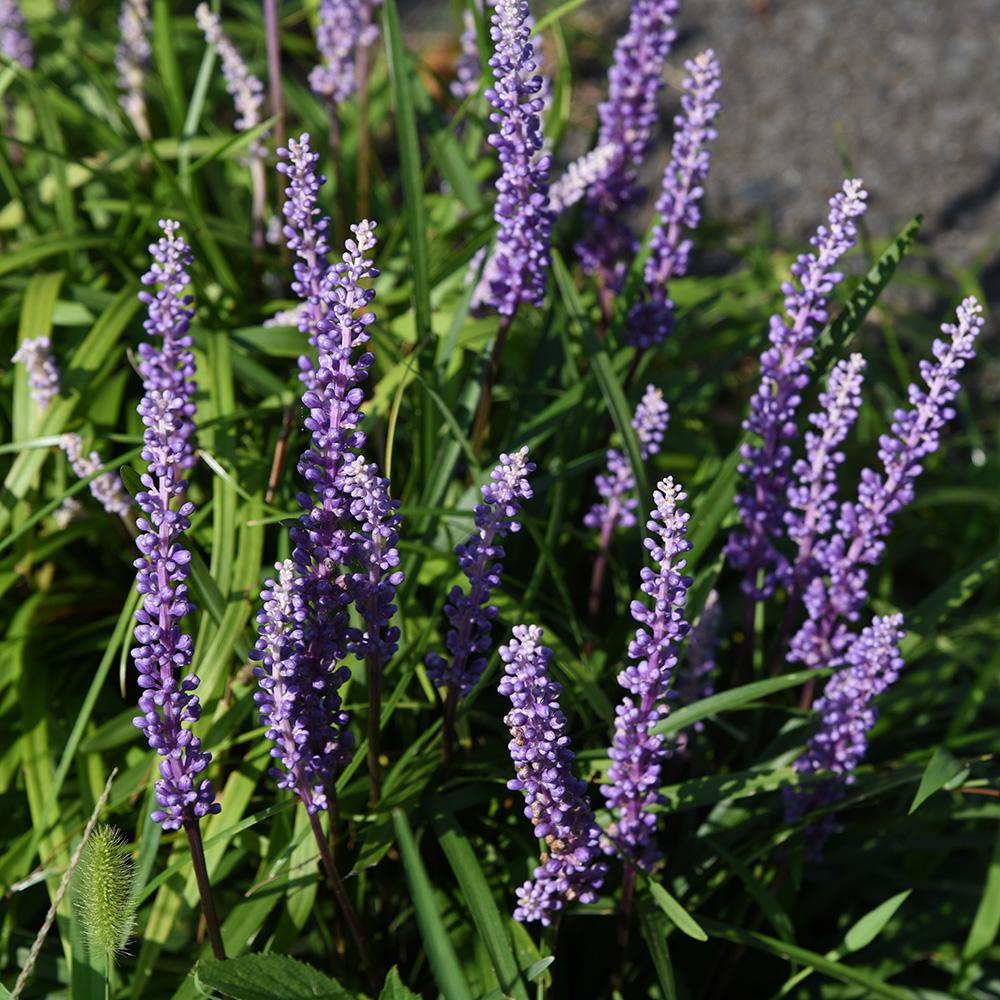
BUY NOW
Specifications:
- The plant is shipped as a container.
- The plant grows to an average height of 18 in. and an average width of 24 in.
- The best time for planting is spring to fall.
- The color of the blooms is purple.
- The botanical name of the plant is Muscari Super Blue.
- It does not give out any fragrance.
- This perennial has to have a minimum of 10 inches between its plantings.
- This plant is returnable up to 180 days.
- This plant can tolerate part sun.
- This plant attracts no wildlife.
- This plant deters no wildlife.
- The growth habit of this plant is clumping.
- The hardiness zone of this plant is
- 10 (30 to 40 F),11 (40 to 50 F),6 (-10 to 0 F),7 (0 to 10 F),8 (10 to 20 F),9 (20 to 30 F).
- The plant requires water twice a week.
Key Points:
- This plant tolerates sun and shade and is capable of returning every spring.
- This plant is perfect for growing as a border or for mass planting.
- The moderate disease-resistance shown by this plant makes it more grower-friendly.
Pros:
- This plant does not demand much of your water, energy, or time.
- This groundcover greatly enhances the looks of your garden.
- This plant is sun-tolerant.
Cons:
- Keeping an eye to spot weed occurrences and pulling them off before they spread is absolutely essential.
FAQ
Q1. Is this plant deer-resistant?
Yes, this plant is deer-resistant.
Q2. How much spacing should be given between the plants for planting?
A minimum of 10 in. should be given as a spacing between the plants.
4. Yellow/ White/ Pink/ Red Stonecrop Half Flat Sedum Groundcover
This plant is all you need if you want to cover an area quickly. These plants are exceedingly resilient and require water in trace amounts only and cover a lot of the ground easily. The unique color this plant offers, its drought tolerance, and the easy caring that it requires makes it a preferable perennial for growing in an area quickly.
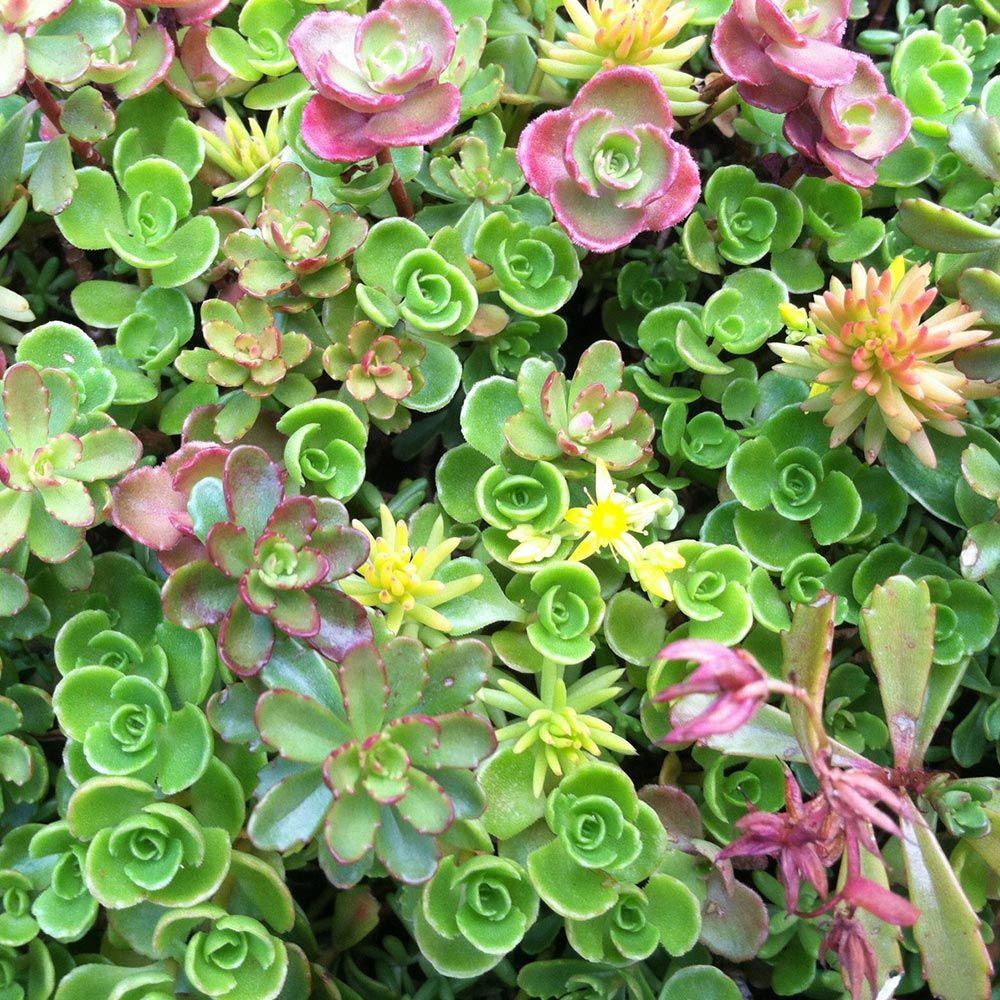
BUY NOW
Specifications:
- The plant is shipped as a container.
- The plant grows to an average height of 6 in. and an average width of 10 in.
- The best time for planting is during no-blossoms.
- The blossoms of this plant come in assorted shades.
- The botanical name of the plant is Stonecrop.
- It gives out no fragrance.
- This perennial has to have a minimum of 12 inches between its plantings.
- This plant is returnable up to 180 days.
- This plant can tolerate part sun.
- This plant attracts bees and butterflies.
- This plant deters deers.
- This plant is shipped as bare root.
- The plant can tolerate part sun.
- The plant requires dry soil.
- The growth habit of this plant is spreading.
- The hardiness zone of this plant is 4 (-30 to -20 F),7 (0 to 10 F).
Key Points:
- This plant can quickly cover an area of ground.
- The plant gives blooms in different assorted shades, which greatly uplifts the aesthetics of the garden.
Pros:
- This plant is low-maintenance.
- The plant requires very little water.
- The plant can thus thrive even during droughts.
Cons:
- These plants are not tolerant of full sun.
FAQ
Q1. What kind of fragrance does this plant give?
This plant is basically non-fragrant, thus making it one of the go-to ground-covering perennials.
Q2. Does this plant require watering every day?
No, this plant has to be watered less frequently.
5. Pot Sunflare Japanese Forest Grass (Hakonechloa), Live Potted Perennial Grass
This plant has bicolored leaves that look great on aging. While most ornamental plants thrive in the shade, SunFlare doesn’t require shade and is great for woodland gardens and also as ground covers. The slow spreading of this plant eases manageability and is ideal for container gardening. These plants exhibit great results while growing in soil with good moisture and drainage and do not require frequent watering.
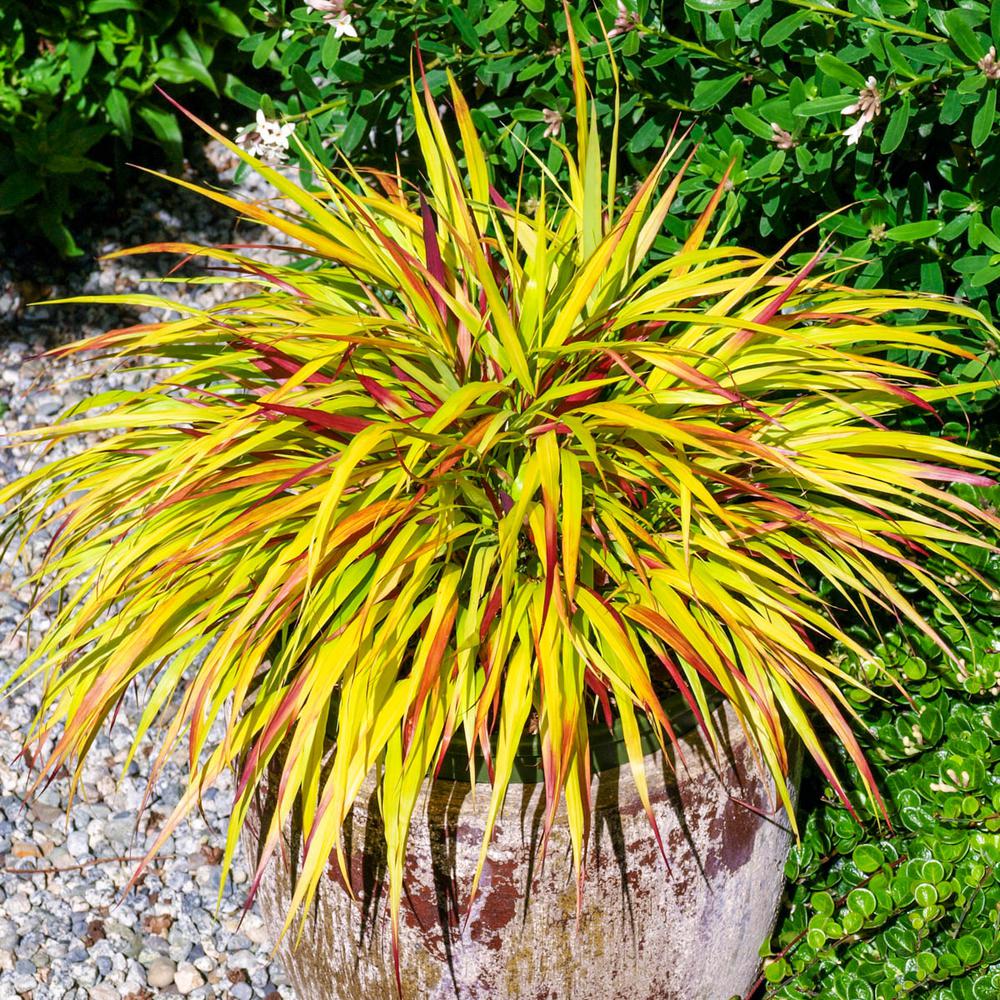
BUY NOW
Specifications:
- The plant is shipped as a container.
- The plant grows to an average height of 18 in. and an average width of 16 in.
- The best time for planting it is spring to summer.
- The plant does not give blossoms.
- The botanical name of the plant is HAKONECHLOA MACRA ‘HABSF1007’ PP27734.
- The common name of this plant is Hakone Grass.
- It does not give out any fragrance.
- This perennial has to have a minimum of 14 in. to 16 in. spacing between its plantings.
- This plant is returnable up to 180 days.
- This plant can tolerate part sun.
- This plant attracts no wildlife.
- This plant deters no wildlife.
- The growth habit of this plant is mounded.
- The hardiness zone of this plant is 5 (-20 to -10 F),6 (-10 to 0 F),7 (0 to 10 F),8 (10 to 20 F),9 (20 to 30 F).
- The plant requires daily watering.
Key Points:
- This plant greatly improves the look and feel of a particular place with their vibrant green leaves and thick spreading mounts.
- This plant is one of the rarest grasses which can grow in shady areas.
Pros:
- This plant is of supreme quality.
- This plant is shade-tolerant.
Cons:
- This plant requires everyday watering.
- This plant grows slowly.
FAQ
Q1. Will this moss only aid in decoration?
Yes, this moss is only used for decoration and aesthetic purposes.
Q2. What is this plant’s bloom time?
This plant blooms from July to August.
6. Pillow Talk Peony (Paeonia), Live Bare Root Perennial Plant, Pink Flowers
This plant with its radiant, fragrant double bloom, measuring approximately 5 in. across, attracts bees and butterflies, beautifying your garden in breathtaking ways. These plants have to be nurtured in soil with good drainage. The blooms of this plant can be expected somewhere between early summer and late spring.
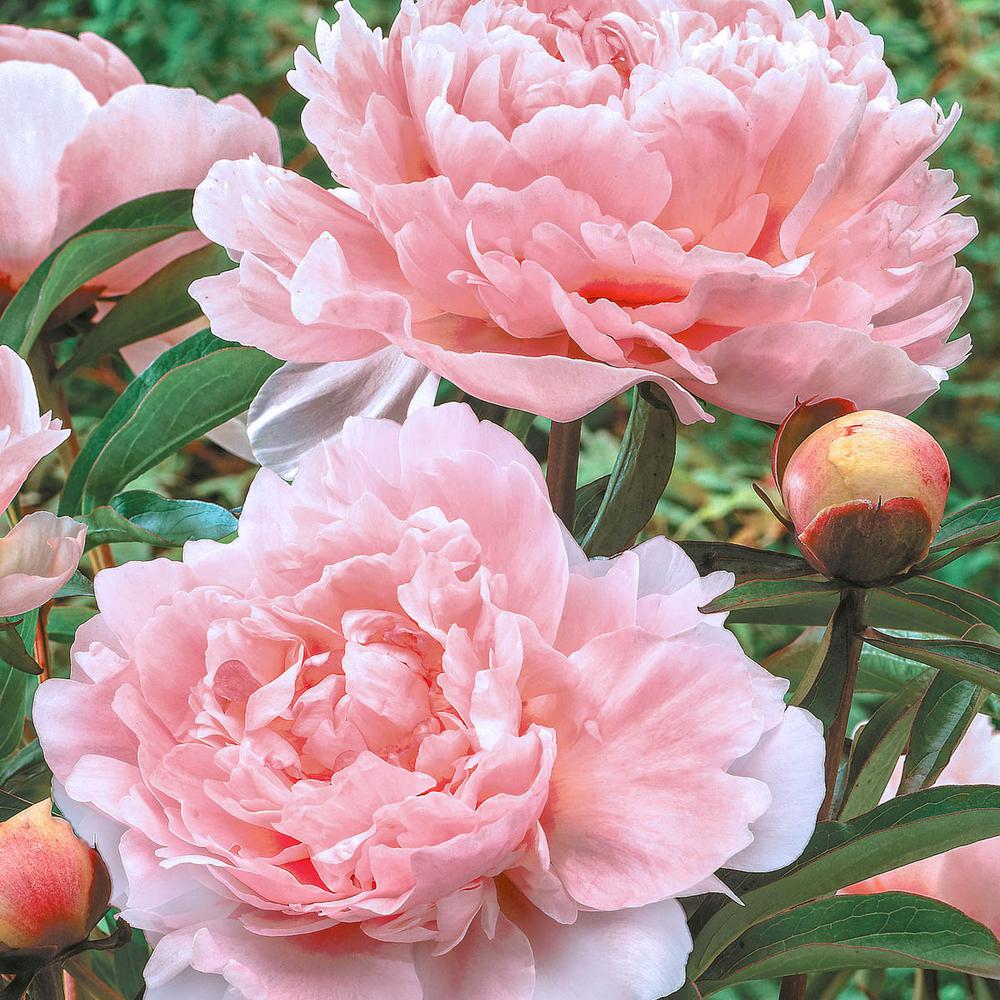
BUY NOW
Specifications:
- The plant is shipped as bare root.
- The plant grows to an average height of 30 in. and an average width of 36 in.
- The best time for planting it is spring to summer.
- The plant gives pink blossoms.
- The botanical name of the plant is Paeonia Lactiflora ‘Pillow Talk’.
- The common name of this plant is Peony.
- This plant gives out a mild fragrance.
- This perennial has to have a minimum of 24 in. to 36 in. spacing between its plantings.
- This plant is returnable up to 180 days.
- This plant can tolerate part sun.
- This plant attracts pollinators.
- This plant deters no wildlife.
- The growth habit of this plant is clumping.
- The hardiness zone of this plant is 3 (-40 to -30 F),4 (-30 to -20 F),5 (-20 to -10 F),6 (-10 to 0 F),7 (0 to 10 F),8 (10 to 20 F).
- The plant requires watering twice a week.
Key Points:
- Peonies are breathtakingly beautiful plants that are highly seasonal and are grown in some countries out of season due to the sheer demand.
- The fragrance of Peonies is another of their attributes that awaken your senses.
Pros:
- Peonies are vibrant and are everything you need to add beauty to your place.
- They require less frequent watering.
Cons:
- Peony greatly attracts ants.
- Peonies are unpredictable and seasonal.
FAQ
Q1. What is the count of eyes in the root?
This plant is a 2-3 eye bare root.
Q2. Is this plant deer-resistant?
Yes, this plant is deer resistant.
7. Pot Dragon’s Blood Sedum Groundcover Live Bareroot Perennial Plant Blue Foliage with Red Flowers
This plant is a low-growing dense mat that grows to a height of 3 in. to 5 in. and bears succulent foliage. The bright red flowers of this plant blooms in late summer adorn the leaves that form the ground cover. The leaves form radiant reddish-orange coloration during fall. This plant is great for controlling erosion of the soil and is also easily adaptable and tolerant of soil’s moisture conditions. The best condition to grow the plant is during the full sun when the plant bears impressive flowers.
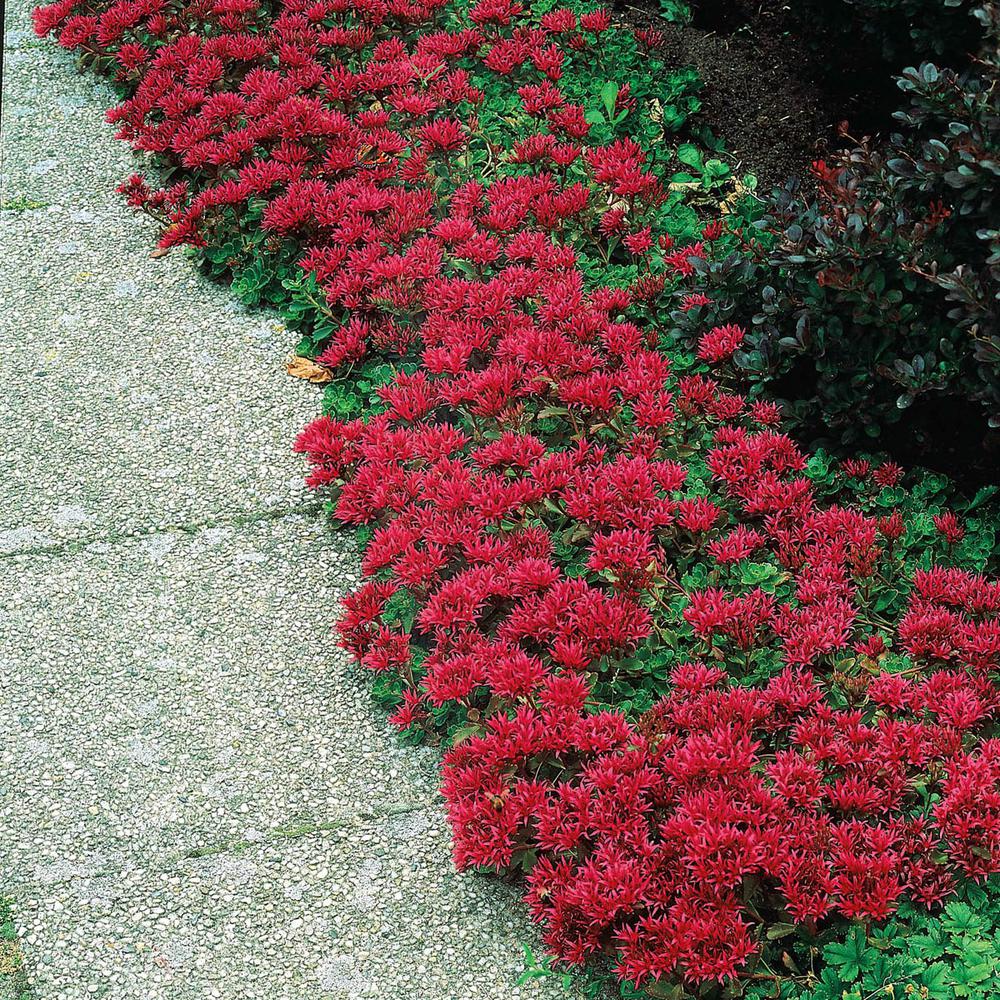
BUY NOW
Specifications:
- The plant is shipped as a container.
- The plant is shipped at an average height of 3 in.
- The plant grows to an average height of 4 in. and an average width of 15 in.
- The best time for planting it is summer to spring.
- The plant gives red blossoms.
- The botanical name of the plant is SEDUM SPURIUM ‘FULDAGLUT’.
- The common name of this plant is Sedum.
- This plant does not give out any fragrance.
- This perennial has to have a minimum of 12 in. to 15 in. spacing between its plantings.
- This plant is returnable up to 180 days.
- This plant can tolerate part sun.
- This plant attracts pollinators like bees.
- This plant deters no wildlife.
- The growth habit of this plant is creeping.
- The hardiness zone of this plant is 3 (-40 to -30 F),4 (-30 to -20 F),5 (-20 to -10 F),6 (-10 to 0 F),7 (0 to 10 F),8 (10 to 20 F),9 (20 to 30 F).
- The plant requires watering twice a week.
Key Points:
- The plant shows great tolerance to moisture and drought conditions.
- This plant does not require the addition of organic composts or fertilizers.
- Sedum greatly discourages weed growth and also aids in the controlling of soil erosion.
Pros:
- This plant is drought-resistant.
- Sedum is greatly adaptable to dry as well as moist soil conditions.
- The vibrant color of the flowers and foliage are a visual treat.
Cons:
- Sedum is intolerant towards foot traffic. Hence, it is advisable to avoid planting them on flagstones on a path.
FAQ
Q1. How many numbers of plants would be required for covering an area of 160 sq ft?
One hundred plants would be required to cover a 160 sq. ft area with the plants spaced at 15 inches from each other.
Q2. Can this plant grow in Massachusetts?
Yes, this plant can grow well in the location mentioned as it is hardy in zones 3-9.
8. Breeder’s Choice Daylily (Hemerocallis) Mixture Live Bare Root Perennial Plants Multi-Colored Flowers
This plant comes in a bag that is filled with daylilies of assorted colors. The radiant blooms of this plant are all you need for covering your gardens and borders. The plants are ideal for growing in sloppy areas and are adaptable to different soil types and conditions. They are low maintenance plants that bloom sometime in the midst of midsummer to frost and add great ornamental value to your garden.
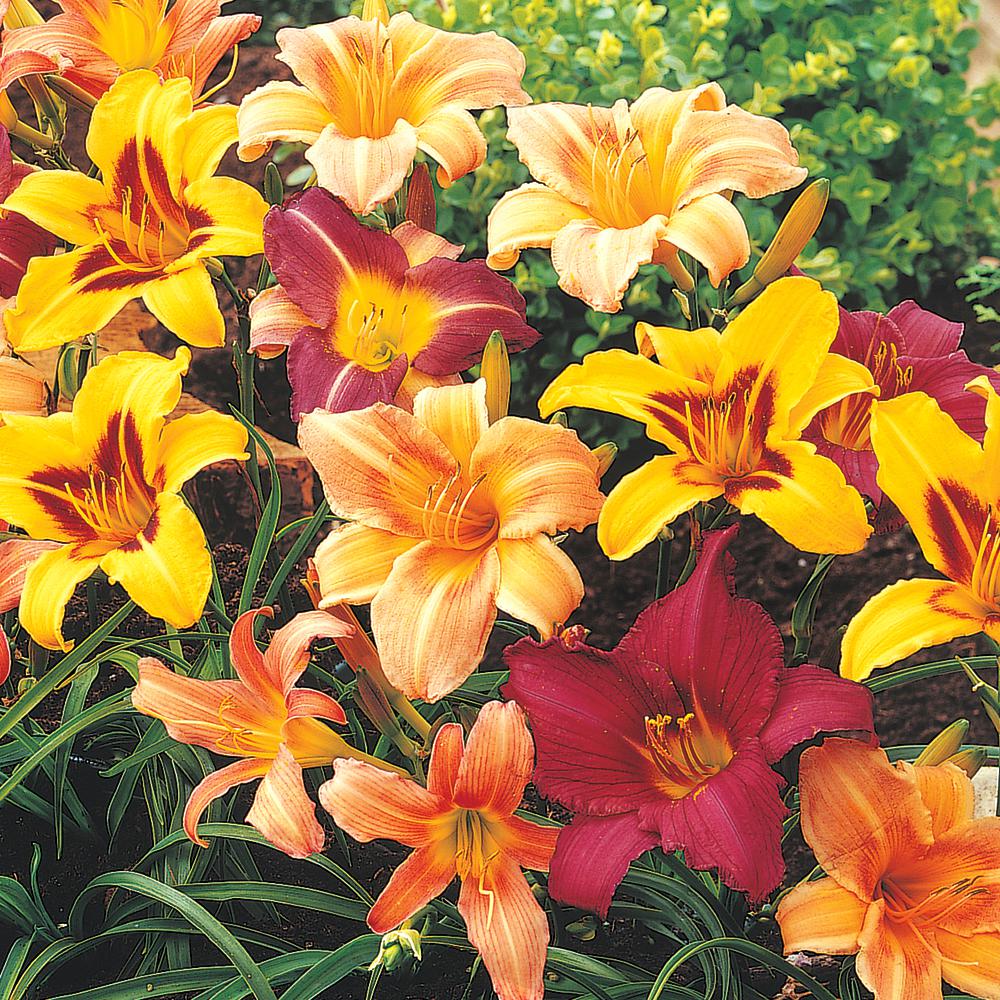
BUY NOW
Specifications:
- The plant is shipped as a bare root.
- The plant is shipped at an average height of 3 in.
- The plant grows to an average height of 36 in. and an average width of 24 in.
- The best time for planting is spring to fall.
- The plant gives blooms in assorted colors.
- The botanical name of the plant is Hemerocallis Mix.
- The common name of this plant is the daylily.
- This plant does not give out any fragrance.
- This perennial has to have a minimum of 24 in spacing between its plantings.
- This plant is returnable up to 180 days.
- This plant can tolerate part sun.
- This plant attracts pollinators like bees.
- This plant deters no wildlife.
- The growth habit of this plant is clumping.
- The hardiness zone of this plant is 3 (-40 to -30 F),4 (-30 to -20 F),5 (-20 to -10 F),6 (-10 to 0 F),7 (0 to 10 F),8 (10 to 20 F),9 (20 to 30 F).
- The plant requires watering twice a week.
Key Points:
- Daylilies are capable of thriving in a wide variety of conditions and can pull off great looks even during their non-flowering times.
- Planting them naturally enhances the looks of your garden.
Pros:
- They greatly aid in soil erosion control.
- These plants grow at a quick pace.
- Daylilies bloom in assorted colors and are exactly what you need if you are looking for easy-to-grow plants.
Cons:
- Daylilies are not very much disease-resistant.
FAQ
Q1. Can this plant grow in full sunlight?
Yes, they show great growth signs and bloom the best when they are planted in full sun.
Q2. How tall can these plants grow?
These plants grow to a height of 12-36 inches.
9. Orange Marmalade Hosta, Live Bareroot Perennial Plant
This plant changes its colors twice during its maturity period. The leaves of this plant unfurl in a greeny color with their centers transforming to a yellowish-orange coloration. During the season, the centers of the leaf again show coloration changes. It fades to parchment white. This plant is excellent for growing in shady landscapes.
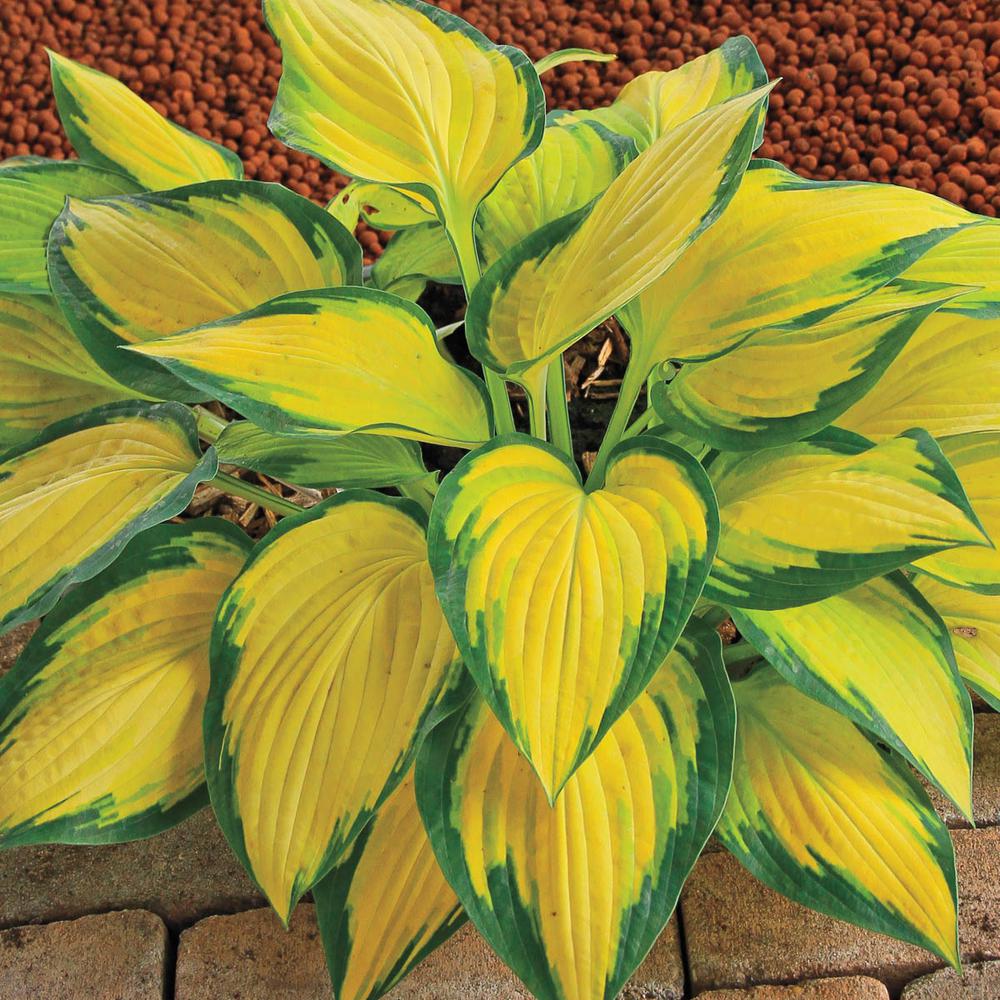
BUY NOW
Specifications:
- The plant is shipped as a bare root.
- The plant is shipped at an average height of 4 in.
- The plant grows to an average height of 17 in. and an average width of 34 in.
- The best time for planting is spring to fall.
- The plant gives blooms in white color.
- The botanical name of the plant is Hosta ‘Orange Marmalade’ Pp16742.
- The common name of this plant is Hosta.
- This plant does not give out any fragrance.
- This perennial has to have a minimum of 30 in. to 34 in. spacing between its plantings.
- This plant is returnable up to 180 days.
- This plant can tolerate part sun.
- This plant attracts no wildlife.
- This plant deters deer.
- The growth habit of this plant is clumping.
- The hardiness zone of this plant is 3 (-40 to -30 F),4 (-30 to -20 F),5 (-20 to -10 F),6 (-10 to 0 F),7 (0 to 10 F),8 (10 to 20 F),9 (20 to 30 F).
- The plant requires watering twice a week.
Key Points:
- Hostas are greatly tolerant of droughts and do not wilt even if the soil cannot hold a good amount of moisture.
- They are greatly practical for growing in many gardens as they have a hardiness zone of 3-9.
Pros:
- Hostas have a good deal of longevity.
- Hostas are greatly helpful in discouraging weed growth.
- This plant does not require dividing.
Cons:
- Sun and hail are capable of damaging hostas.
- They are not very suitable for native gardens.
FAQ
Q1. Is this plant deer-resistant?
Yes, this plant is deer-resistant.
Q2. Should this plant be watered daily?
Not necessary. This plant requires watering only twice a week.
10. Carolina Jessamine Yellow Bloom Plant
This plant bears evergreen foliage, which is not only glossy but also waxy. The flowers are trumpet-shaped and colored like sunshine yellow. They complete the garden with their breathtaking floral fragrance. This late summer blooming plant is all you need if you want to mask unsightly areas, arbors, and fences with a pop of delightful color.
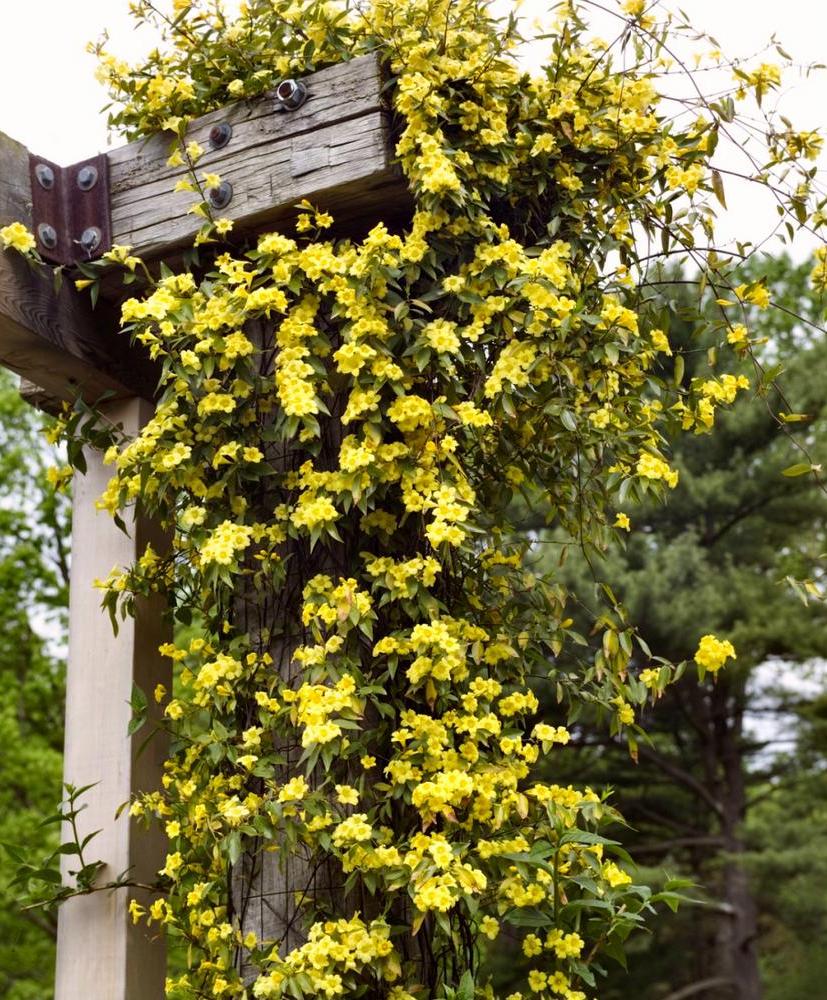
BUY NOW
Specifications:
- The plant is shipped as a container.
- The plant is shipped at an average height of 8 in.
- The plant grows to an average height of 240 in. and an average width of 36 in.
- The best time for planting is in fall.
- The plant gives blooms in yellow color.
- The botanical name of the plant is Gelsemium sempervirens.
- The common name of this plant is Trumpet Vine.
- This plant gives out a very strong fragrance.
- This perennial has to have a minimum of 24 in. spacing between its plantings.
- This plant is returnable up to 180 days.
- This plant can tolerate part sun.
- This plant attracts pollinators.
- This plant deters no wildlife.
- The growth habit of this plant is climbing.
- The hardiness zone of this plant is 7 (0 to 10 F),8 (10 to 20 F),9 (20 to 30 F).
- The plant requires watering once a week.
Key Points:
- This plant is greatly capable of growing in a wide variety of conditions.
- The sweet scent of the flowers and their amazingly vibrant color is all you need to awaken your senses and refresh your minds.
Pros:
- This plant requires watering only once a month.
Cons:
- Some people might find it hard to tolerate the strong fragrance.
- They are extremely toxic and can be fatal when eaten.
FAQ
Q1. What wildlife does this plant attract?
This plant attracts pollinators like butterflies and hummingbirds.
Q2. How often should this plant be watered?
This plant requires watering only once a month.
11. Robellini Palm Tree
This plant is all you need if you are looking for low maintenance and easy-to-grow plants that can make your home, office, or landscape great. This plant is a natural humidifier and detoxifier as it purifies the air by removing the toxins present in them like benzene, formaldehyde, and CO. The grace added by this plant due to the L arching fronds gives you a refreshing feel of a tropical escape.
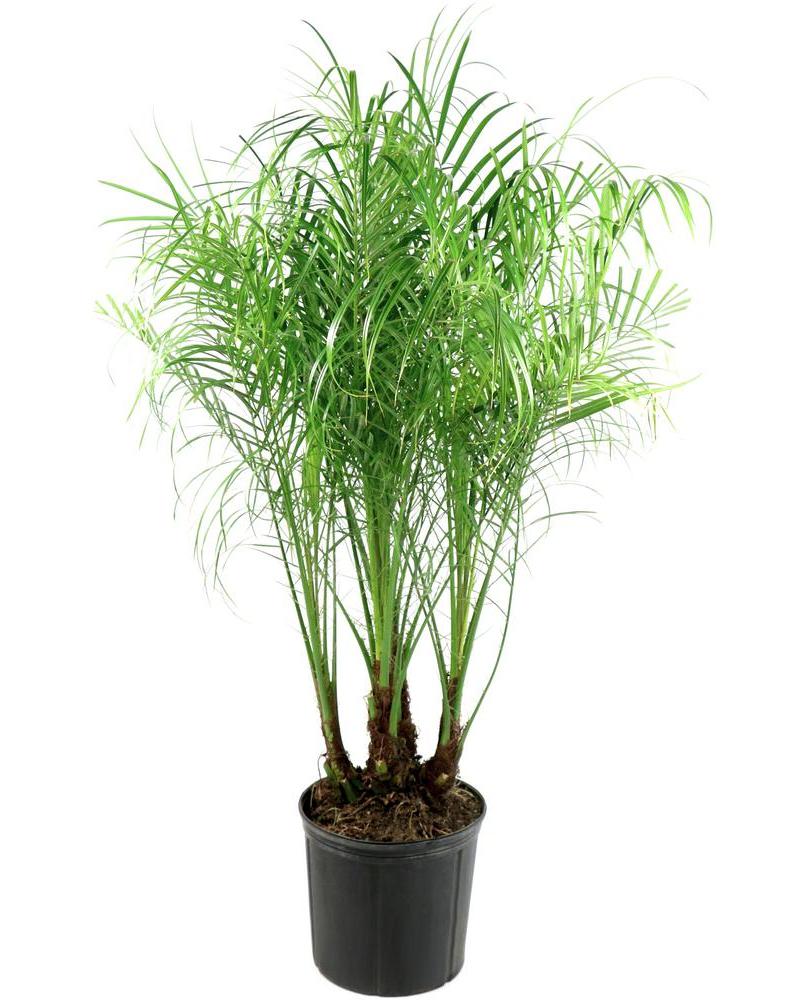
BUY NOW
Specifications:
- The plant is shipped as a container.
- The plant is shipped at an average height of 8 in.
- The plant grows to an average height of 120 in. and an average width of 36 in.
- The best time for planting is in fall.
- The plant gives no blooms.
- The botanical name of the plant is Phoenix Roebelenii.
- The common name of this plant is Palm.
- This plant is non-fragrant.
- This perennial has to have a minimum of 24 in. spacing between its plantings.
- This plant is returnable up to 180 days.
- This plant can tolerate part sun.
- This plant does not attract any wildlife.
- This plant deters no wildlife.
- The growth habit of this plant is upright.
- The hardiness zone of this plant is 10 (30 to 40 F),11 (40 to 50 F),9 (20 to 30 F).
- The plant requires watering once a week.
Key Points:
- This plant is a natural humidifier and detoxifier as it aids in the removal of toxic components in the air, thus rendering you with fresh air.
- Palm plants have also been found to reduce dust levels in indoor spaces. They are very much encouraged for people suffering from dust allergy, asthma, and respiratory diseases to grow in their indoor spaces.
- Palm plants are also found to improve humidity and keep the temperature at ambient levels.
Pros:
- This plant greatly adds ornamental value to your indoor landscapes like offices and homes.
- Palm plants refresh your home with their natural fresh-smelling scent.
Cons:
- Palm plants are a bit pricey.
FAQ
Q1. How often should this plant be watered?
This plant requires watering only once a week.
Q2. Does this plant attract any wildlife?
This plant attracts no wildlife.
12. Washintonia Palm Tree
This plant proliferates and is exceptionally hardy and glossy. Commercial growing of this plant in outdoor and open landscapes is a blessing sight. This plant bears fan-shaped foliage from which it receives its common name ‘The Mexican Fan Palm.’ The plant is best for growing in USDA hardy zones 8-11 and grows the best under full sun.
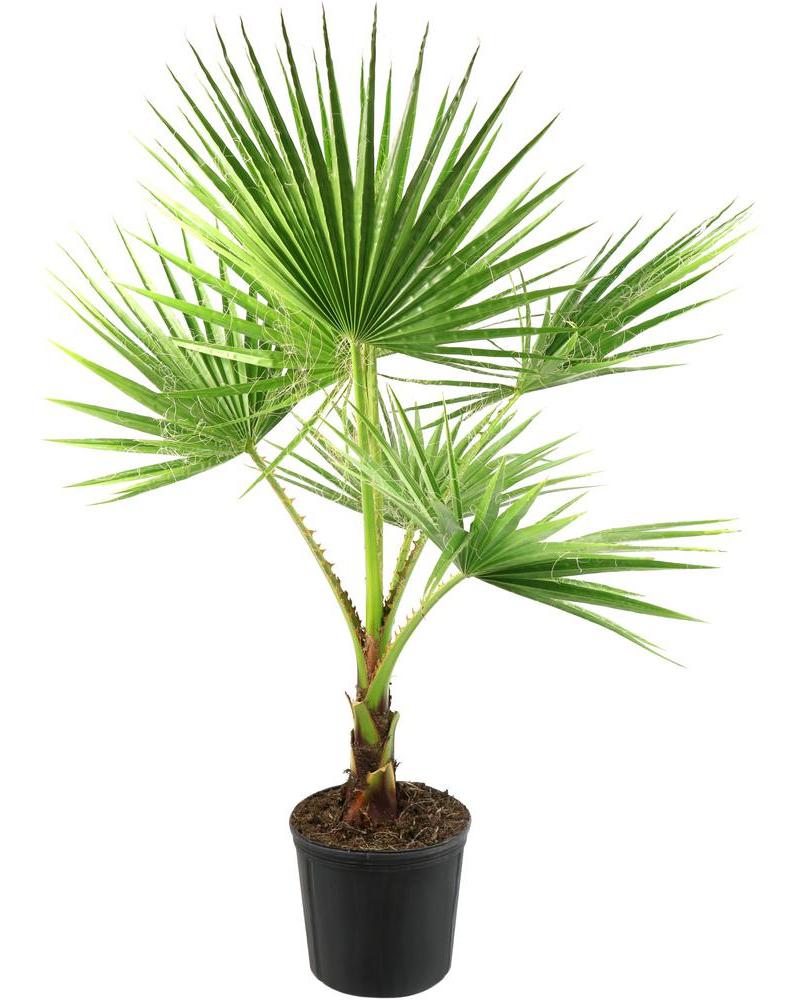
BUY NOW
Specifications:
- The plant is shipped as a container.
- The plant is shipped at an average height of 8 in.
- The plant grows to an average height of 1200 in. and an average width of 360 in.
- The best time for planting is fall.
- The plant gives no blooms.
- The botanical name of the plant is Washingtonia robusta.
- The common name of this plant is Palm.
- This plant is non-fragrant.
- This perennial has to have a minimum of 24 in. spacing between its plantings.
- This plant is returnable up to 180 days.
- This plant can tolerate part sun.
- This plant does not attract any wildlife.
- This plant deters no wildlife.
- The growth habit of this plant is upright.
- The hardiness zone of this plant is 10 (30 to 40 F),11 (40 to 50 F),9 (20 to 30 F).
- The plant requires watering once a week.
Key Points:
- This plant is a natural detoxifier and purifier as it aids in the removal of toxic components in the air, thus rendering you with fresh air.
- Apart from the improved aesthetic provided by their presence, palms are widely popular because of their longevity.
Pros:
- This plant greatly adds ornamental value to outdoor and open landscapes.
- This plant requires water once a week only.
Cons:
- Palm plants are a bit pricey.
FAQ
Q1. How often should this plant be watered?
This plant requires watering only once a week.
Q2. Does this plant attract any wildlife?
This plant attracts no wildlife.
13. Shangri-La Philodendron Plant
This amazingly compact and free branching plant bears fresh, divided, and ruffled foliage, which becomes distinct over its maturation. The elegance and freshness offered by this plant make it ideal for growing in indoor spaces, containers, and offices. The natural humidifying and detoxifying property of this plant enables in the removal of toxins in the air and thus renders fresh and pure air for breathing, making it a typical house plant.
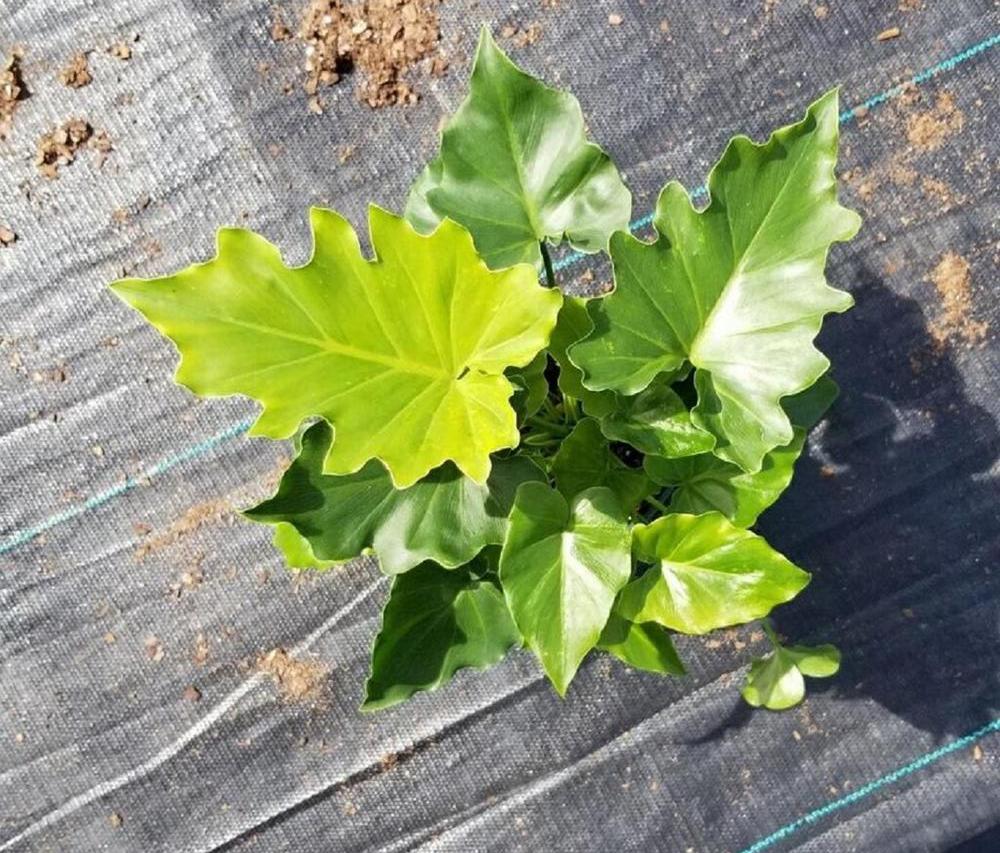
BUY NOW
Specifications:
- The plant is shipped as a container.
- The plant is shipped at an average height of 8 in.
- The plant grows to an average height of 36 in. and an average width of 48 in.
- The best time for planting is in fall.
- The plant gives no flowers.
- The botanical name of the plant is Philodendron Shangri-La.
- The common name of this plant is Philodendron.
- This plant is non-fragrant.
- This perennial has to have a minimum of 24 in. spacing between its plantings.
- This plant is returnable up to 180 days.
- This plant can tolerate part sun.
- This plant does not attract any wildlife.
- This plant deters no wildlife.
- The growth habit of this plant is upright.
- The hardiness zone of this plant is 9 (20 to 30 F).
- The plant requires watering once a week.
Key Points:
- Philodendron is the kind of plant that lets you know what exactly it needs if you are keen enough to follow the signals.
- Philodendron is an excellent humidifier and detoxicant, enriching your ambiance with air rich in freshness and purity.
- The waxy leaves of Philodendron engage in dust trapping.
Pros:
- Philodendron requires watering once a week only.
Cons:
- Philodendron is not tolerant of insufficient or over-sufficient watering, and the leaves are capable of drooping and browning in those cases.
FAQ
Q1. How much water is required by Philodendron?
Philodendron should be watered once a week.
Q2. What is the height to which Philodendron grows?
The plant grows to a maximum height of 36 inches.
14. Woodland Plant Virginia BlueBells Roots
This plant bears one of the most beautiful flowers called the Virginia BlueBells, which are a perennial native to North America. They are great plants and are adaptable to be grown in many gardens. The blooms are pink in the budding stage and eventually colorize to bluish-purple hues on blooming. They are a striking sight when planted in dense gardens. The plant is best suited for growing as a group or in masses. This plant should be grown in well-drained soils, and excess watering should be avoided to adorn your garden with thick and colorful blooms.
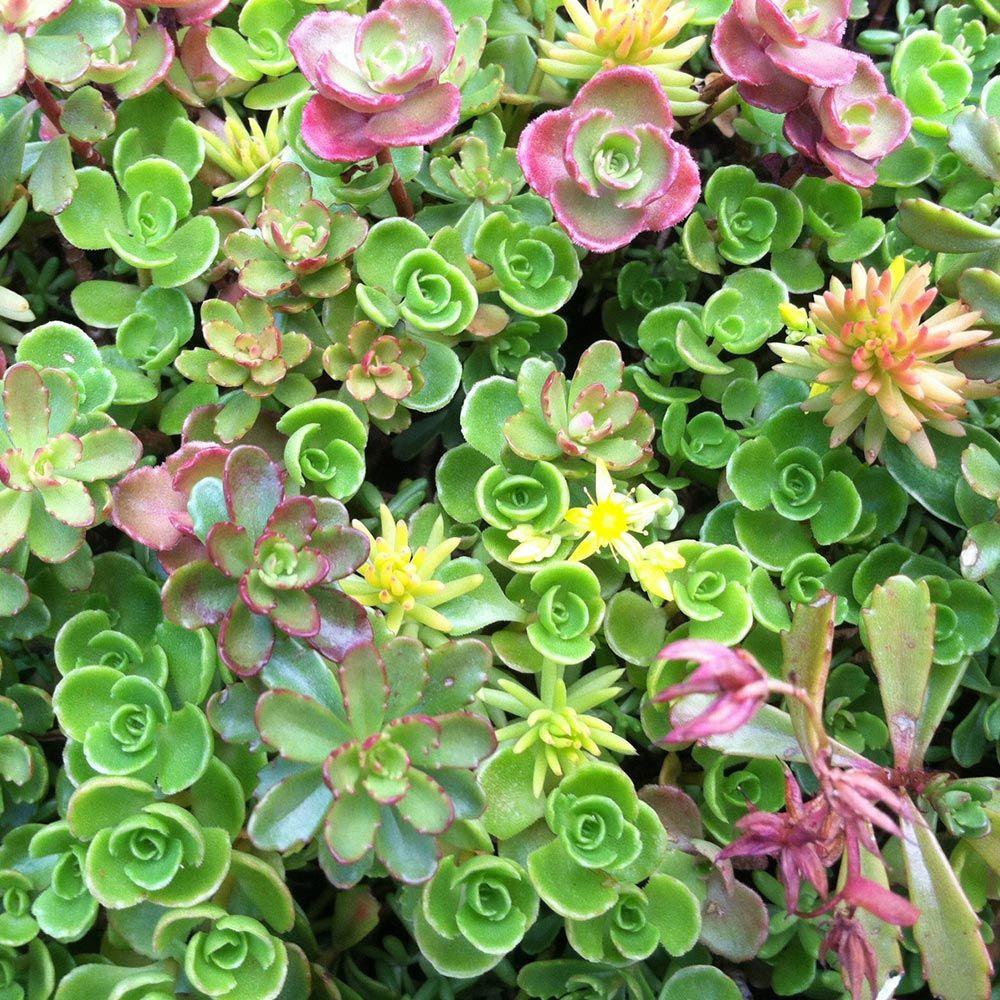
BUY NOW
Specifications:
- The plant is shipped as a container.
- The plant is shipped at an average height of 5 in.
- The plant grows to an average height of 12 in. and an average width of 12 in.
- The best time for planting is in spring.
- The plant gives blue colored blooms.
- The botanical name of the plant is
- The common name of this plant is BlueBell.
- This plant is non-fragrant.
- This perennial has to have a minimum of 12 in. to 24 in. spacing between its plantings.
- This plant is returnable up to 180 days.
- This plant can tolerate part sun.
- This plant does not attract any wildlife.
- This plant deters deer.
- The growth habit of this plant is spreading.
- The hardiness zone of this plant is 5 (-20 to -10 F),6 (-10 to 0 F),7 (0 to 10 F),8 (10 to 20 F),9 (20 to 30 F).
- The plant requires watering twice a week.
Key Points:
- This plant does not require pruning and trimming.
- The plant enhances the aesthetics of your garden with its blooms.
Pros:
- The plant requires watering once a week only.
- This plant is a great choice for naturalizing your yard or outdoor space.
Cons:
- This plant is less expensive.
FAQ
Q1. How much water is needed by the plant?
The plant needs watering twice a week.
Q2. What is the spacing needed to be maintained while growing this plant?
The plants should be planted 12 in. to 24 in. apart.
15. Pink Lily Of the Valley(Convallaria) Live Barefoot Groundcover Perennial Plant, Pink Flowers
This versatile lily-of-the-valley is a fast-growing, readily multiplying fragrant perennial which can be very well enjoyed by planting them indoors or outdoors. This perennial is exactly what you need for shady areas in your landscape and will grace your ambiance by their early spring appearance bell-shaped flowers. On the fading of the flowers, you still get to experience the orange berries during summer. Planting them in your rock gardens and woodland areas as a ground cover is one of the easiest and best choices to enhance your garden aesthetics as they spread quickly in shade gardens and under trees. Spacing the plants 12 inches to 19 inches apart in well-drained soils is a great choice for yielding incredible results. You can expect its height to reach a standard length of 8 inches. This deer-resistant plant blooms during early to late springs and is exactly what you need if you are looking for growing plants in partial and full shade.

BUY NOW
Specifications:
- The plant is shipped at the height of 2 inches.
- The plant grows to an average height of 8 in. and an average width of 18 in.
- The best time for planting is spring to fall.
- The color of the blooms is pink.
- The botanical name of the plant is Convallaria majalis ‘Rosea’.
- It does not give out any fragrance.
- This perennial has to have a minimum of 18 inches between its plantings.
- This plant is returnable up to 180 days.
- This plant can tolerate part sun.
- This plant attracts pollinators.
- This plant deters no wildlife.
- This plant is shipped as bare root.
- The growth habit of this plant is spreading.
- The hardiness zone of this plant is 2 (-50 to -40 F),3 (-40 to -30 F),4 (-30 to -20 F),5 (-20 to -10 F),6 (-10 to 0 F),7 (0 to 10 F),8 (10 to 20 F).
Key Points:
- This plant greatly compliments your garden aesthetics if grown as garden covers and soil covers or under trees.
- This plant is deer-resistant.
- This plant gives out orange berries during summers.
Pros:
- This plant is great in giving your indoors and outdoors the needed greeny ambiance.
- This plant is non-fragrant, which makes it a preferable choice.
Cons:
- This plant has to be watered every day.
FAQ
Q1. What is the height at which the plant is shipped?
The plant is shipped at the height of 2 in.
Q2. Can this plant tolerate full shade?
Yes, this plant is capable of tolerating both full shade and partial shade.
16. Peacock Calathea Plant
Peacock Calathea has splendidly vibrant leaves that resemble the decorative and showy feathers of a peacock. The pale green leaves bear by this plant has a contrastingly dark green feathery effect in the center and edges and purplish pink undersides with trace markings on their top. This tropical houseplant is all you need if you are looking for a plant to uplift the ambiance of your indoor space as this grows best in medium to bright indirect light.
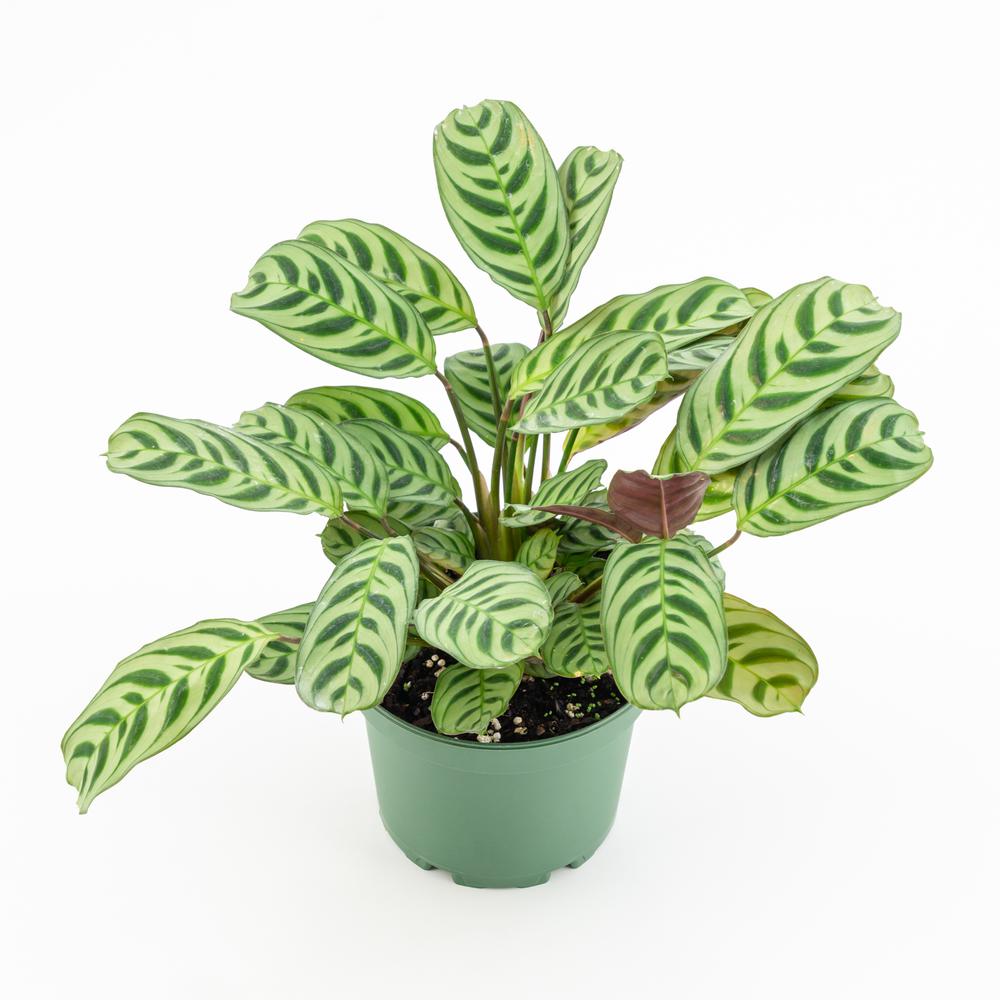
BUY NOW
Specifications:
- The plant is shipped at the height of 8 inches.
- The plant grows to an average height of 24 in. and an average width of 18 in.
- The best time for planting is spring to fall.
- The plant gives no blossoms.
- The botanical name of the plant is Calathea Makoyana.
- The common name of the plant is
- It does not give out any fragrance.
- This perennial has to have a minimum of 18 inches between its plantings.
- This plant is returnable up to 180 days.
- This plant can tolerate part sun.
- This plant attracts pollinators.
- This plant requires watering once a week.
- This plant deters no wildlife.
- This plant is shipped as a container.
- The growth habit of this plant is dense.
- The hardiness zone of this plant is 8 (10 to 20 F).
Key Points:
- These plants brighten indoor spaces and interior areas with a pop of green.
- These plants are exactly what you need if you are looking for enhancing the elegance of your space without putting much effort into maintaining them.
Pros:
- This plant can thrive in low light conditions.
- This plant requires watering once a week only.
Cons:
- This plant might outgrow the garden space, which is allotted to them.
FAQ
Q1. How often should this plant be watered?
This plant requires watering once a week.
Q2. Does this plant give any flowers?
No, this plant does not give any flowers.
17. Curcuma Pink Bloom Plant
This tropical plant is widely popular for its vibrant and brilliantly colored flowers and leaves, which uplifts the ambiance of any setting in which it is grown. The flowers of these plants are pinecone-shaped, and the leaves are of 3 ft. length. Apart from the striking eyesight this plant offers, it is also believed that this plant has many medicinal benefits that encourage growers to grow Curcuma.
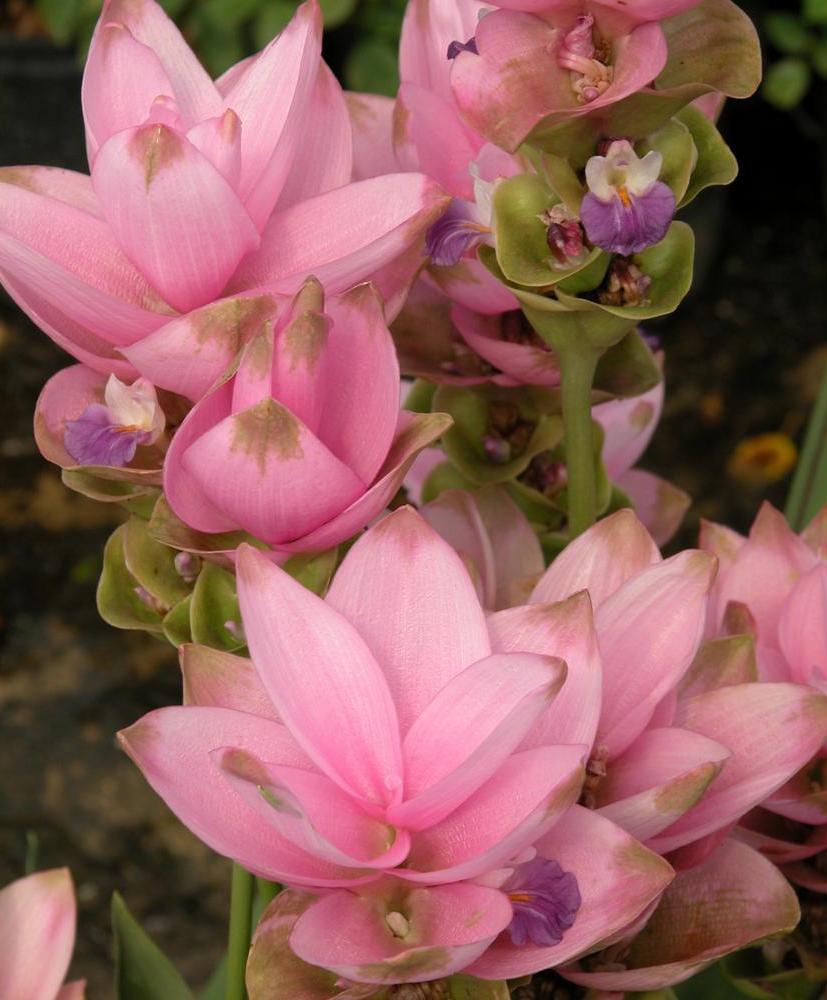
BUY NOW
Specifications:
- The plant is shipped at the height of 8 inches.
- The plant grows to an average height of 48 in. and an average width of 48 in.
- The best time for planting is in fall.
- The plant gives pink blossoms.
- The botanical name of the plant is Curcuma Turmeric.
- The common name of the plant is Ginger Plant.
- It gives out a strong scent.
- This perennial has to have a minimum of 24 inches between its plantings.
- This plant is returnable up to 180 days.
- This plant can tolerate part sun.
- This plant attracts pollinators.
- This plant requires watering once a week.
- This plant deters no wildlife.
- This plant is shipped as a container.
- The growth habit of this plant is erect.
- The hardiness zone of this plant is 10 (30 to 40 F),11 (40 to 50 F),8 (10 to 20 F),9 (20 to 30 F).
Key Points:
- These plants brighten indoor spaces and interior areas with colorful flowers and vibrant leaves.
- The plant is rich in medicinal benefits and is considered a ‘superfood.’
Pros:
- This plant can thrive in low light conditions.
- This plant requires watering once a week only.
Cons:
- Turmeric, when consumed in excess, might make some people vomit and feel nausea.
FAQ
Q1. How often should this plant be watered?
This plant requires watering once a week.
Q2. Does this plant give any flowers?
Yes, the plant gives pink blossoms.
18. Lipstick Blonde Hosta, Live Bareroot Perennial Plant
This plant can be grown in shady areas. The bright yellow leaves of this plant are lance-shaped and grow up to a maximum length of 15 in. This plant gives rise to lavender blossoms during summer, which is 20 in. in length and have stalks that rise above the leaves. This plant is all you need if you are looking to uplift the tones of shaded containers and woodland gardens.
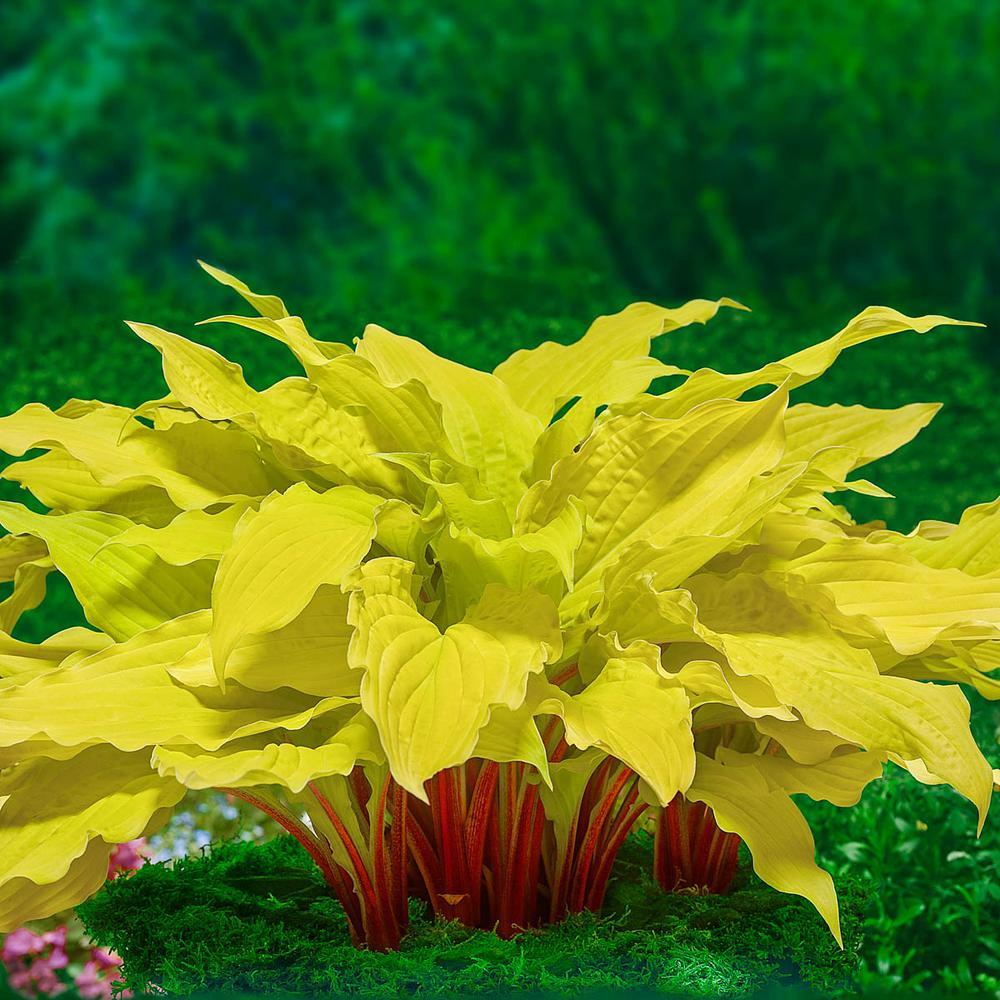
BUY NOW
Specifications:
- The plant is shipped at the height of 4 inches.
- The plant grows to an average height of 15 in. and an average width of 18 in.
- The best time for planting is spring to fall.
- The plant gives white blossoms.
- The botanical name of the plant is HOSTA ‘LIPSTICK BLONDE’.
- The common name of the plant is
- It does not give out any fragrance.
- This perennial has to have a minimum of 18 inches between its plantings.
- This plant is returnable up to 180 days.
- This plant can tolerate part sun.
- This plant attracts pollinators.
- This plant requires watering twice a week.
- This plant deters no wildlife.
- This plant is shipped as a bare root.
- The growth habit of this plant is clumping.
- The hardiness zone of this plant is 3 (-40 to -30 F),4 (-30 to -20 F),5 (-20 to -10 F),6 (-10 to 0 F),7 (0 to 10 F),8 (10 to 20 F),9 (20 to 30 F).
Key Points:
- These plants brighten indoor spaces and interior areas with colorful flowers and vibrant leaves.
- The plant is rich in medicinal benefits and is considered a ‘superfood’.
Pros:
- This plant is great for brightening up your garden.
- This plant requires watering once a week only.
Cons:
- Turmeric, when consumed in excess, might make some people vomit and feel nausea.
FAQ
Q1. How often should this plant be watered?
This plant requires watering once a week.
Q2. Does this plant give any flowers?
Yes, the plant gives pink blossoms.
19. Goldilocks Creeping Jenny (Lysimachia) Live Plant, Gold-Green Foliage
This plant has bright golden-green foliage that uplifts the ambiance of the garden. This plant is ideal for hanging baskets, containers, and window boxes. This ground cover plant with rounded leaves is fondly referred to as ‘Golden Jenny’ due to their foliage. The plant gives rise to yellow blossoms that bloom from late spring to summer and thrives in well-drained soil. This quart perennial requires partial to full sun for more than four hours a day and is exactly what is required for boosting your garden aesthetics.
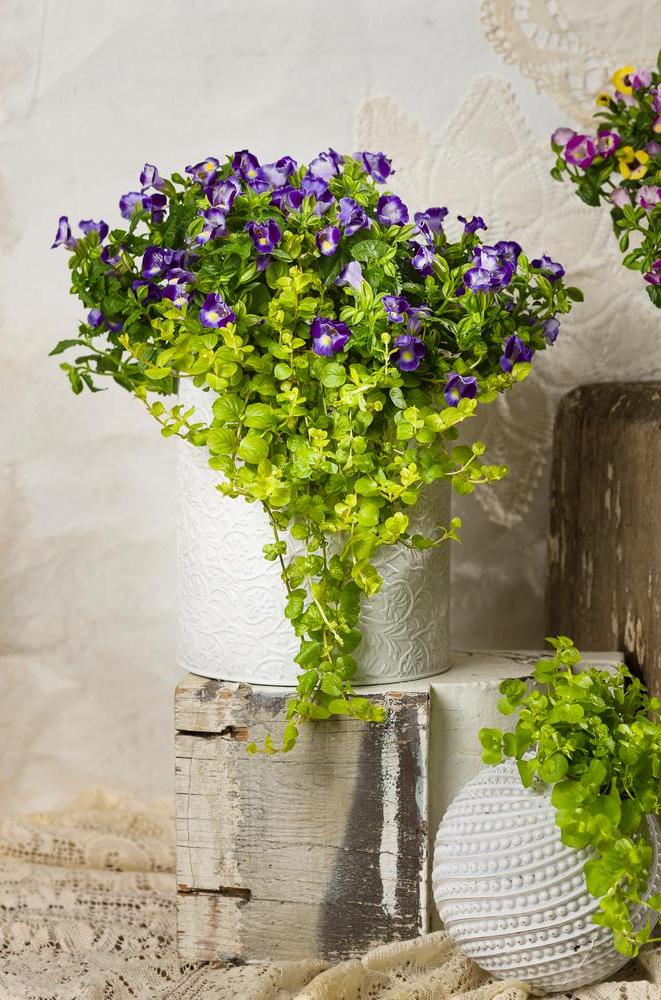
BUY NOW
Specifications:
- The plant is shipped at the height of 5 inches.
- The plant grows to an average height of 2 in. and an average width of 12 in.
- The best time for planting is spring.
- The plant gives blossoms in assorted colors.
- The botanical name of the plant is Lysimachia.
- The common name of the plant is Creeping Jenny.
- It does not give out any fragrance.
- This perennial has to have a minimum of 12 in. to 14 in. between its plantings.
- This plant is returnable up to 180 days.
- This plant can tolerate part sun.
- This plant attracts pollinators.
- This plant requires watering twice a week.
- This plant deters deer.
- This plant is shipped as a bare root.
- The growth habit of this plant is spreading.
- The hardiness zone of this plant is 10 (30 to 40 F),3 (-40 to -30 F),4 (-30 to -20 F),5 (-20 to -10 F),6 (-10 to 0 F),7 (0 to 10 F),8 (10 to 20 F),9 (20 to 30 F).
Key Points:
- The fresh leaves of this plant are applied to the bruised areas of skin for treating.
- The plant is highly rich in its medicinal value and is used for treating internal bleeding and diarrhea.
- The plant also makes a great ground cover for your garden.
Pros:
- This plant has a high medicinal value.
- This plant requires watering twice a week only.
Cons:
- This plant is felt to be a little expensive for its size.
FAQ
Q1. Does this plant last through winter every year?
This plant is a perennial which is capable of thriving winters for years to come.
Q2. Does this plant give any flowers?
Yes, the plant gives small insignificant yellow blooms.
20. Pot Purple Petticoats Angel Trumpet Datura, Live Potted Perennial Plant in Purple Flowers
This plant gives rise to ruffled blooms due to which it got its name. The blooms measure 8 in. and are beautifully layered and wrapped one inside another. These blossoms bloom all through summer till winter. The plant can be grown in well-drained soil, which is also enriched with humus and grows best in full or filtered sun. The plant grows up to a height of 4 ft. to 6 ft. and is one of the preferred tropical plants for planting in borders and corners.
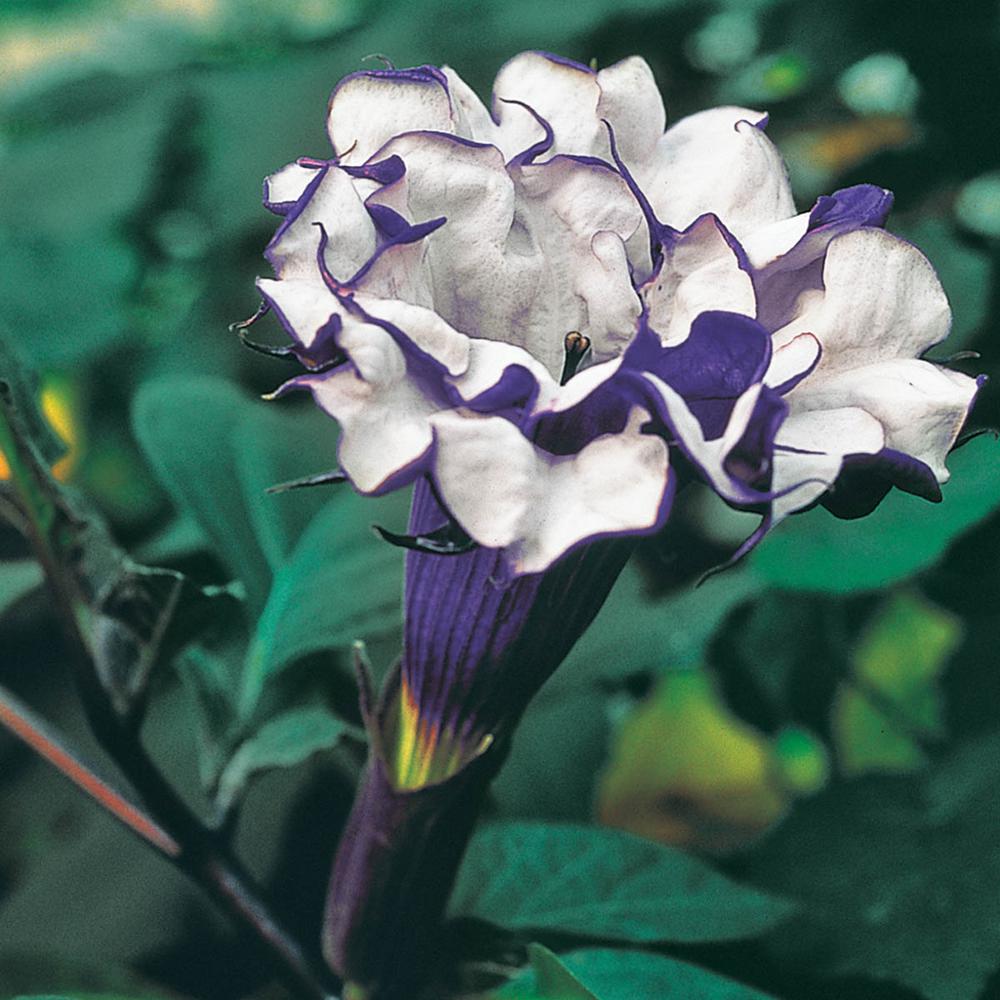
BUY NOW
Specifications:
- The plant is shipped at the height of 3 inches.
- The plant grows to an average height of 72 in. and an average width of 36 in.
- The best time for planting is spring to fall.
- The plant gives blossoms in purple.
- The botanical name of the plant is Datura Double ‘Purple Petticoats’.
- The common name of the plant is Angel Trumpet.
- It does not give out any fragrance.
- This perennial has to have a minimum of 36 in. between its plantings.
- This plant is returnable up to 180 days.
- This plant can tolerate part sun.
- This plant attracts pollinators like bees.
- This plant requires watering twice a week.
- This plant deters deer.
- This plant is shipped as a container.
- The growth habit of this plant is clumping.
- The hardiness zone of this plant is 10 (30 to 40 F),9 (20 to 30 F).
Key Points:
- The flowers of this plant are truly a gentle reminder of how awe-striking nature can be and adorns your garden with immense ornamental value.
- The foliage of this plant is also an equally good contributor in adorning your garden.
Pros:
- This plant is great for brightening up your garden.
- This plant requires watering twice a week only.
Cons:
- All parts of this plant are highly toxic.
FAQ
Q1. Is this plant toxic?
Yes, every part of this plant is completely toxic.
Q2. How much water is required by this plant?
This plant requires watering two times a week only.
These are some of the best perennial plants for growing in part sun, which will never fail to bless your garden with immense looks and vibrant colors.





